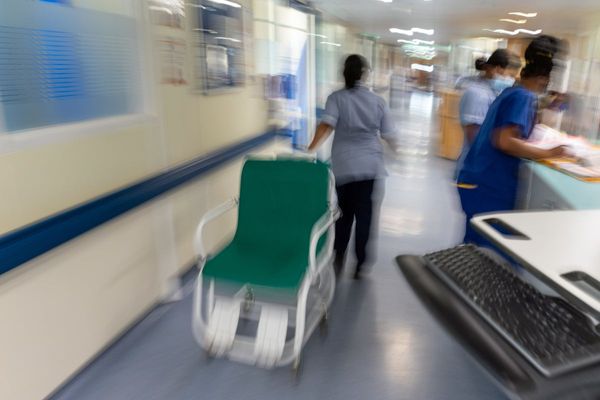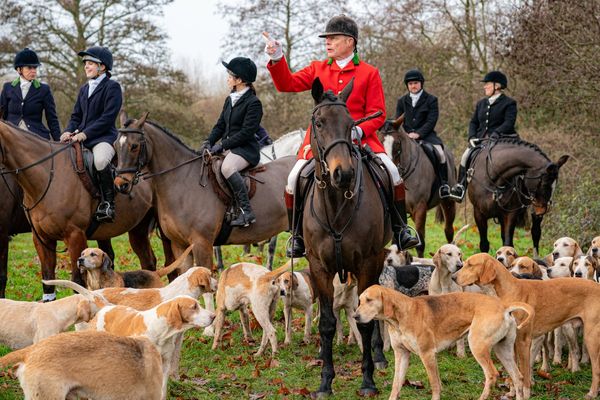
Colombo (AFP) - Sri Lankan Prime Minister Mahinda Rajapaksa quit on Monday, as an outbreak of political violence killed three people including an MP and wounded more than 150.
Lawmaker Amarakeerthi Athukorala from the ruling party shot two people -- killing a 27-year-old man -- and then took his own life after being surrounded by a mob of anti-government protesters outside the capital Colombo, police said.
Sri Lanka has suffered months of blackouts and dire shortages of food, fuel and medicines in its worst economic crisis since independence.
That sparked weeks of overwhelmingly peaceful demonstrations against President Gotabaya Rajapaksa, as well as his brother the prime minister.
On Monday scores of Rajapaksa loyalists attacked unarmed protesters camping outside the president's office on a seafront promenade in downtown Colombo, AFP reporters said.
The violence began after several thousand supporters of the prime minister, bused in from rural areas, poured out of his nearby official residence.
"We were hit, the media were hit, women and children were hit," one witness told AFP, asking not to be named.
Police fired tear gas and water cannon and declared an immediate curfew in Colombo, which was later widened to include the entire South Asian island nation of 22 million people.
More than 150 people were hospitalised, a Colombo National Hospital spokesman told AFP.
The army riot squad was called in to reinforce police.Soldiers had mostly been deployed throughout the crisis to protect deliveries of fuel and other essentials, but not to prevent clashes before.
"Strongly condemn the violent acts taking place by those inciting & participating, irrespective of political allegiances," President Rajapaksa tweeted."Violence won't solve the current problems."
However, both Buddhist and Catholic leaders said the Rajapaksas were responsible for starting the violence and both should resign.
Mahinda Rajapaksa tendered his resignation as prime minister, saying it was to pave the way for a unity government.
However, the country's largest opposition party said before the clashes it would not join any government helmed by a member of the clan.
The resignation of the prime minister automatically means the cabinet is dissolved, and came on the day staff-level talks with the International Monetary Fund opened on a possible bailout.
President Rajapaksa has not been seen in public since tens of thousands attempted to storm his private residence in Colombo on March 31.
US condemnation
The US ambassador Julie Chung tweeted that Washington condemned "the violence against peaceful protestors today, and call(s) on the government to conduct a full investigation, including the arrest & prosecution of anyone who incited violence".
Mary Lawlor, UN special rapporteur, said she had heard "disturbing reports...of repression & disproportionate use of force against peaceful demonstrators who are protesting against allegations of corruption & widespread impunity in Government."
After the Colombo violence, anti-government protesters who had been demonstrating peacefully since April 9 began retaliating across the island, despite the curfew.
MP Athukorala's car was surrounded by thousands of people in the town of Nittambuwa as he returned home from the capital after the clashes.
He shot two people before fleeing to a nearby building and then "took his own life with his revolver", a police official told AFP by telephone.
Athukorala's bodyguard was also found dead at the scene, police said.
Angry mobs set alight the homes of at least three pro-Rajapaksa politicians, along with some nearby vehicles, while buses and trucks used by the government loyalists in and around Colombo were targeted for destruction.
Doctors at Colombo National Hospital intervened to rescue wounded government supporters, with soldiers breaking open locks to open the gates.
"They may be murderers, but for us they are patients who must be treated first," a doctor shouted at a mob blocking the entrance to the emergency unit.
The violence was the worst since police shot a protester dead and wounded 24 others on April 19 between Colombo and Kandy.
State of emergency
On Friday, the government imposed a state of emergency granting the military sweeping powers to arrest and detain people, after trade unions brought the country to a virtual standstill.
The defence ministry said in a statement on Sunday that anti-government demonstrators were behaving in a "provocative and threatening manner" and disrupting essential services.
Sri Lanka's crisis began after the coronavirus pandemic hammered vital income from tourism and remittances, starving it of foreign currency needed to pay off its debt and forcing the government to ban many imports.
This in turn has led to severe shortages, runaway inflation and lengthy power blackouts.
In April, the country announced it was defaulting on its $51 billion foreign debt.







